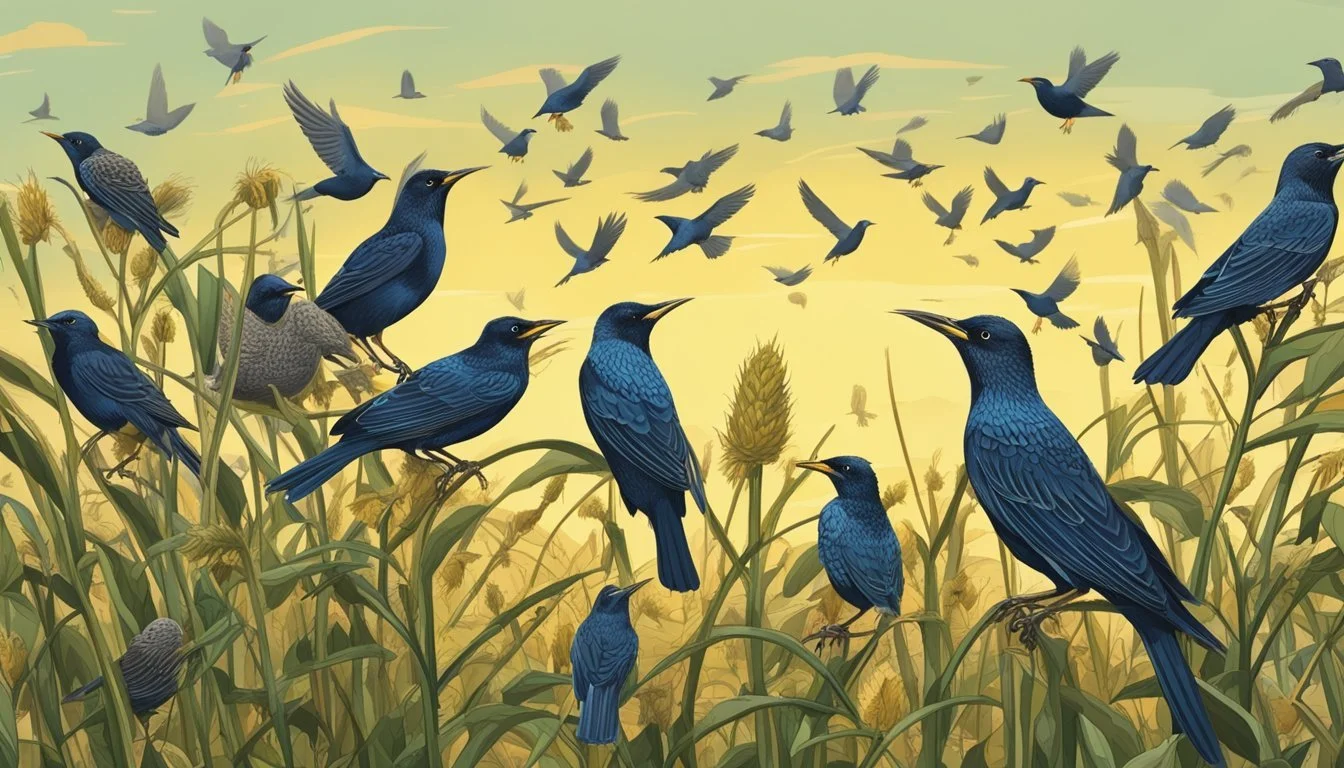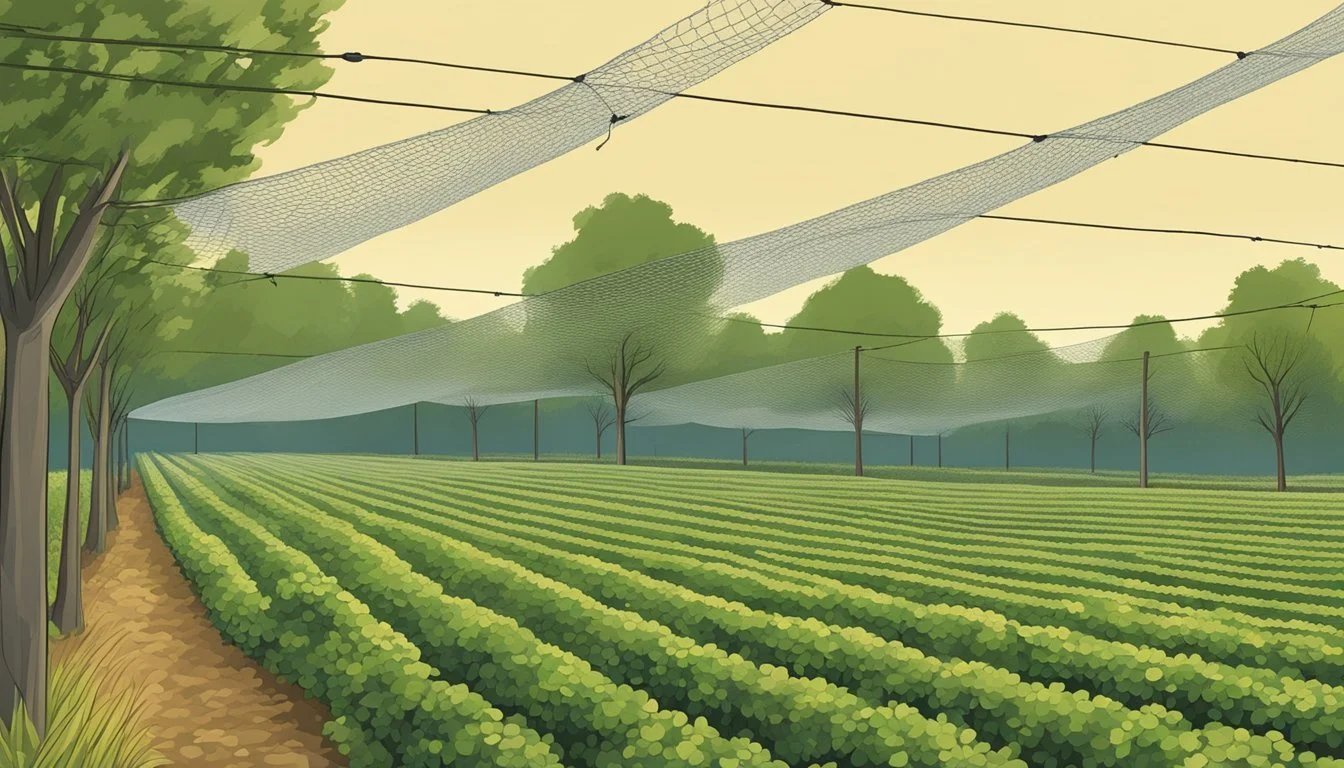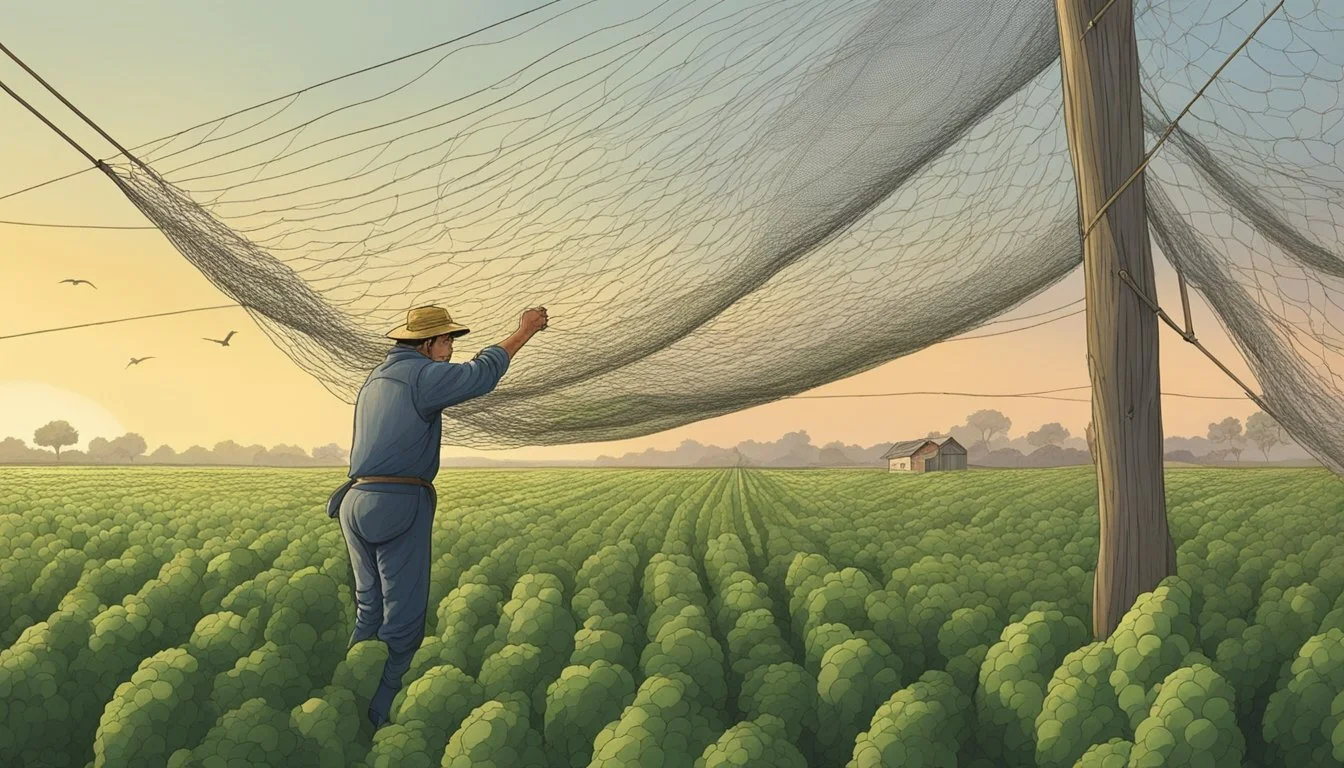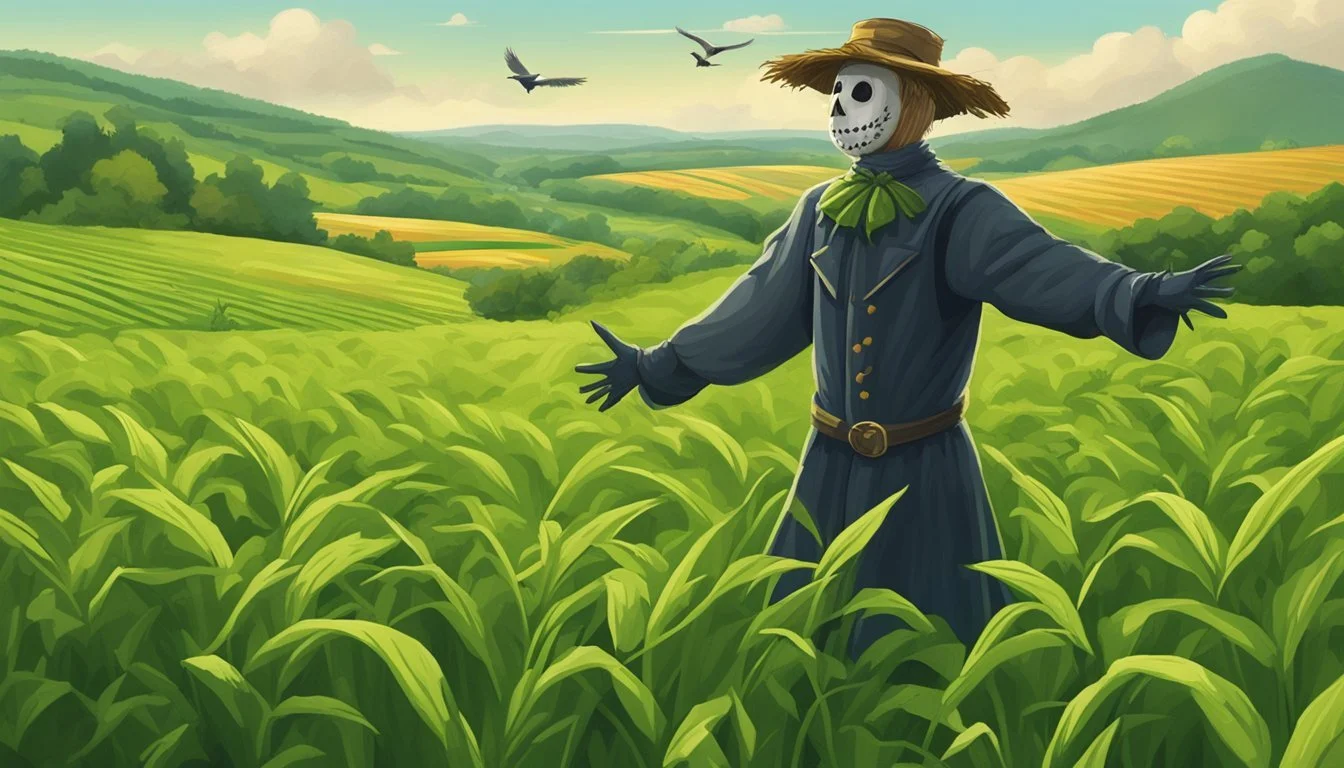Protecting Crops from European Starling
Effective Control Strategies
European starlings, scientifically named Sturnus vulgaris, have become a concern for agricultural producers across various regions, particularly in the United States where they are classified as an invasive species. These birds have a reputation for causing significant damage to crops and competing with native species for habitat. The ease with which European starlings adapt to different environments has allowed their population to grow rapidly since their introduction in the 19th century, exacerbating these issues.
The impact of European starlings on agriculture is multi-faceted. They not only feed on a wide range of fruit and grain crops, leading to direct losses, but they also pose indirect threats through the contamination of livestock feed and transmission of diseases at farms and dairies. Their aggressive nature displaces local bird species, disrupting the ecological balance. Understanding the behavior of European starlings and the extent of their impact is critical in developing strategic measures to protect agricultural resources.
It is essential for farmers and wildlife management professionals to collaborate on sustainable and effective strategies to address the challenges posed by starling populations. These might include habitat modification, repellent techniques, or other control measures that are both economic and ethically responsible. Mitigating the issues caused by Sturnus vulgaris requires an informed approach that balances the needs of the ecosystem with agricultural interests.
Biology and Behavior
The European starling is an adaptable, omnivorous bird known for its remarkable intelligence and success in a variety of habitats. With a biology closely intertwined with human environments, understanding their habits is essential for safeguarding crops.
Species Overview
European starlings (Sturnus vulgaris), native to Europe, Asia, and North Africa, have become prolific members of many ecosystems, especially in North America. They are a medium-sized bird characterized by iridescent black feathers that appear speckled during the winter. Regarded for their intelligence, these birds have demonstrated significant adaptability to urban and rural environments.
Habitat Preferences
Starlings prefer open areas that provide ample foraging opportunities such as farmlands, grasslands, and urban environments. Their adaptability allows them to thrive in a variety of conditions, from the forests of Europe to the diverse urban landscapes of North America. High levels of activity in these locations underlie their success as a species.
Reproduction and Nesting Patterns
The breeding season for European starlings is a time of prolific activity. They are secondary cavity nesters, meaning they do not create their own nesting holes but rather use existing cavities. Each brood typically consists of 4-6 eggs, with some pairs breeding twice a year. This reproductive success contributes to their widespread abundance.
Feeding Habits
Starlings are omnivorous with a diet consisting of insects, seeds, berries, nectar, and human-provided food sources, making them integral to both natural ecosystems and agricultural settings. Their foraging behavior is highly efficient, allowing them to exploit a wide food base, critical for their survival through winter and during the breeding season.
By understanding the biology and behavior of European starlings, strategies can be developed to protect crops while acknowledging the bird's role in various ecosystems.
History and Expansion
In tracing the European starling's presence in North America and beyond, one can pinpoint its introduction to a desire for the literary re-creation of William Shakespeare's works and its current status as a pervasive invasive species.
Introduction to North America
The European starling (Sturnus vulgaris), an invasive species now widespread across North America, was introduced in the late 19th century. In 1890, approximately 60 European starlings were released in New York City's Central Park by a group seeking to establish all the birds mentioned in Shakespeare's plays.
Global Distribution
Since its initial introduction to the United States, the European starling has expanded its range to cover large portions of North America, venturing into parts of North Africa, and even reaching Australia. The bird's adaptability has facilitated its expansion across diverse climates and ecosystems.
Significance of Shakespeare
The European starling’s presence in North America can largely be attributed to the Shakespearean influence of the era. Eugene Schieffelin, a member of the American Acclimatization Society, was inspired by William Shakespeare’s work to introduce the European starling to North America, having cited the bird in "Henry IV."
Through this Shakespeare-induced introduction, European starlings have had a significant ecological and economic impact, leading to numerous efforts to mitigate their proliferation across various continents.
Economic and Ecological Impact
The European starling has substantial economic and ecological ramifications characterized by significant agricultural damage and intense competition with native species, which collectively pose a threat to regional ecosystems.
Damage to Agriculture
European starlings are known for their detrimental presence in agricultural settings, where they cause damage to a variety of crops. They often descend on fields in large numbers, foraging on fruit and grain, leading to considerable economic losses for farmers. The impact includes not only the consumption of harvests but also property damage as their roosting and nesting habits can affect farm structures and machinery.
Affected crops: Fruits and grains
Types of damage: Consumption, property damage
Economic impact: Direct loss of crops, cost of repairs
Competition with Native Species
These birds aggressively compete with native bird species, particularly cavity nesters such as bluebirds and woodpeckers, for nesting sites and food sources. The intense competition can lead to a decline in native bird populations, which is a significant conservation concern.
Competitive actions: Nest site usurpation, aggressive interaction
Impacted species: Bluebirds, woodpeckers, other cavity nesters
Conservation status: Threatened by habitat conflict
Effect on Ecosystems
The integration of European starlings into local ecosystems disrupts the balance, often displacing native species and altering the availability of food resources, such as insects. This has both direct and indirect effects on the environment, changing the dynamics of the ecosystem and posing an additional threat to biodiversity.
Disruption: Food resource competition, displacement of native species
Environmental concerns: Altered ecological dynamics, biodiversity loss
Threat to livestock: Potential disease vector affecting health
Control and Management Strategies
European starlings present significant challenges for crop protection, necessitating a multipronged approach in management and control methods. These methods range from adherence to legal frameworks to the implementation of various physical, chemical, and behavioral techniques.
Legal Framework
Regulations play a crucial role in the management of European starlings, as they are protected under the Migratory Bird Treaty Act. However, because they are considered an invasive species, exceptions allow for the control of their population. It's pivotal for individuals and organizations to understand and comply with local laws when considering removal or shooting of these birds to prevent legal repercussions.
Physical and Mechanical Methods
For physical control, bird netting is widely used to protect crops from starlings. This method denies access to trees and farmland where crops are at risk. In urban or suburban areas, nest removal and trapping are effective to decrease the nesting populations. Moreover, modifying nest boxes to prevent starlings from using them can help to deter the establishment of new flocks.
Chemical Control Options
Chemical control tools involve avicides, which should be used judiciously and as a last resort due to potential negative impacts on other ecosystems and human health. Chemicals must only be used in accordance with regulatory guidelines to ensure the safety of both the environment and humans.
Behavioral and Biological Techniques
Behavioral methods like using scare tactics—including audio devices, falconry, and visual repellents—can discourage starlings from occupying certain areas. Homeowners and farmers can also modify habitats, such as by reducing available food sources like bird feeders and by managing refuse to make areas less inviting to starlings. Additionally, encouraging the presence of natural predators can exert biological control over starling populations.
Public Awareness and Education
Effective European Starling control hinges on informed communities and targeted education efforts. Awareness programs play a pivotal role in safeguarding native species and human health while maintaining the delicate balance of urban and natural ecosystems.
Community Engagement
Communities, especially in areas like parks and urban habitats where starling flocks are prevalent, are instrumental in monitoring and controlling starling populations. Active community involvement can be achieved through workshops that educate residents on identifying European Starlings and encourage cooperative management initiatives. This collective approach is essential for protecting native bird populations and their habitats.
Information Dissemination
Conveying accurate information to the public is crucial. Educational materials should be distributed widely explaining the negative impacts European Starlings have on native birds and their ecosystems. Techniques for discouraging starling presence should be clearly outlined, utilizing flyers, social media, and local news outlets for broader outreach. In New York's Central Park, where these birds were first introduced by Shakespeare enthusiasts, such information campaigns could deter the public from unintentional actions that support starling proliferation.
Native Species Promotion
Promoting the value of native species helps build public support for habitat conservation. Initiatives may include programs in urban areas and parks to plant native vegetation, which not only deters European Starlings — preferring open areas — but also supports native bird populations. Furthermore, public nature trails and bird-watching events can be organized to raise awareness of the variety and importance of native species in maintaining ecological balance.
Through these focused efforts, public awareness and education can significantly contribute to the reduction of European Starling numbers and the preservation of native habitats and species.
Conservation and Research
Effective conservation and research involve ongoing monitoring of bird populations, assessing the impact on ecosystems, and developing sustainable management practices. These efforts help balance the preservation of native bird species with the need to protect agricultural interests from the damaging effects of non-native species like the European Starling.
Monitoring Bird Populations
It is crucial to track the distribution and numbers of European Starlings to understand their population dynamics. Detailing where and when starlings form large flocks can inform control measures and aid in the protection of native bird species that may be outcompeted for resources. Researchers use a variety of methods for monitoring such as bird counts, tagging, and tracking movements.
Studying Impact on Ecosystems
Investigating the impact of European Starlings on local ecosystems is a key research priority. They have a varied diet which allows them to thrive in many environments, potentially disrupting food chains by affecting the availability of resources for native species. Their role as predators or competitors can lead to changes in the formation of native bird communities.
Developing Sustainable Practices
Conservationists are working to develop sustainable practices to reduce the negative impacts of European Starlings on agriculture without causing undue harm to the birds or ecosystems. Methods include habitat modification, use of auditory deterrents, and fostering populations of predators native to the region, aligning with conservation concerns. These strategies aim to reduce the damage to crops while respecting the ecological balance.
Frequently Asked Questions
European starlings present significant challenges in agricultural settings, affecting ecosystems and human health. This section addresses common queries regarding their control, impact, and prevention measures.
What are effective methods for controlling European starlings in agricultural areas?
Integrated pest management tactics have proven to be beneficial for controlling European starlings. Employing methods such as exclusion using netting, noise deterrents, and habitat modification can help reduce their presence in agricultural areas.
What impact do European starlings have on local ecosystems?
They compete aggressively with native species for nest sites and food resources. Their feeding habits can lead to the spreading of invasive plant species, and their nesting can cause blockages in drainage systems.
How do European starlings affect human health?
Starlings can carry and transmit diseases to humans and livestock, such as histoplasmosis, a respiratory illness caused by fungal spores accumulating in their droppings.
In what ways can European starlings be prevented from damaging crops?
Preventive measures include covering fruit bushes with nets, using scare devices, and timely harvesting to minimize the period during which crops are vulnerable to starling damage.
What steps can be taken to deter European starlings from bird feeders?
To discourage starlings from bird feeders, use feeders designed for smaller birds that exclude larger birds. Offering foods that starlings dislike, such as thistle and safflower seeds, can also be effective.
How do European starlings impact the agricultural industry?
Their foraging can lead to significant crop loss, and their droppings can contaminate food sources for livestock, leading to potential health issues and increased maintenance costs for farmers.









